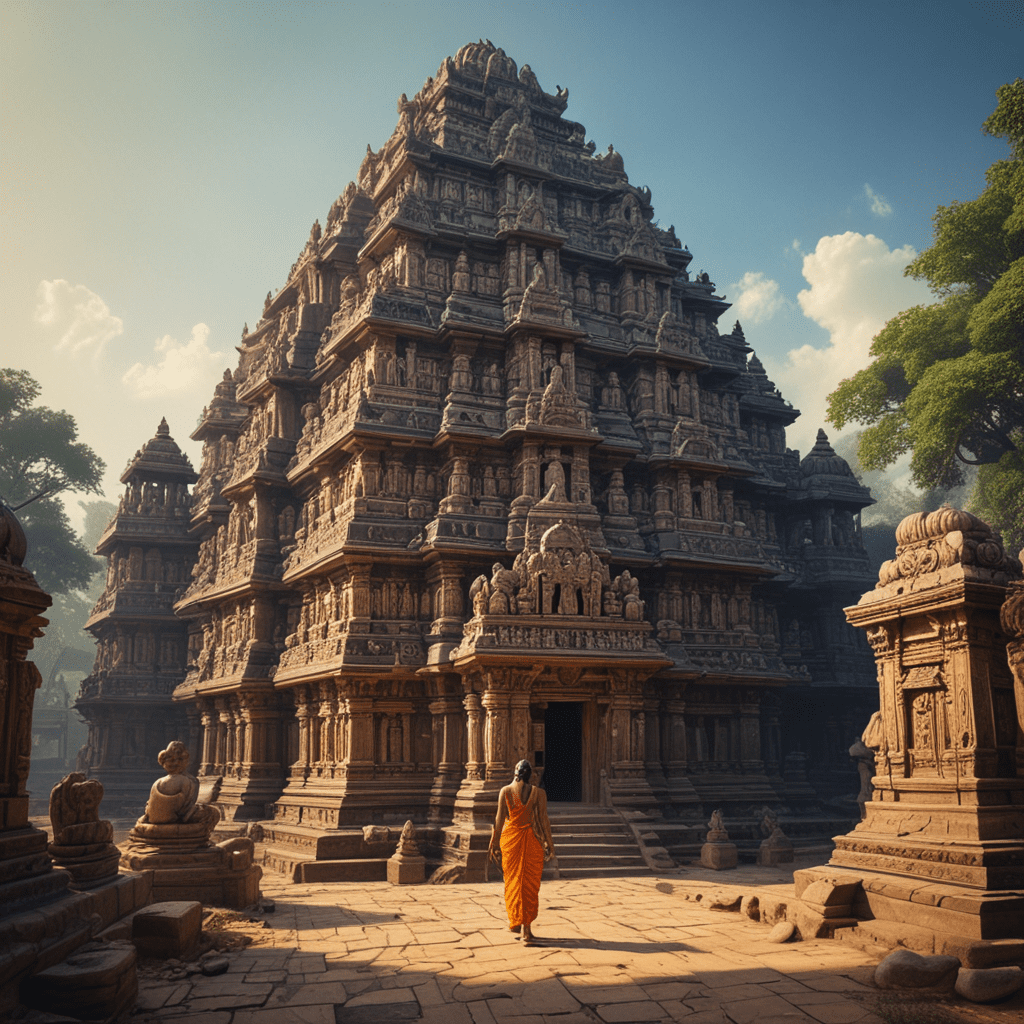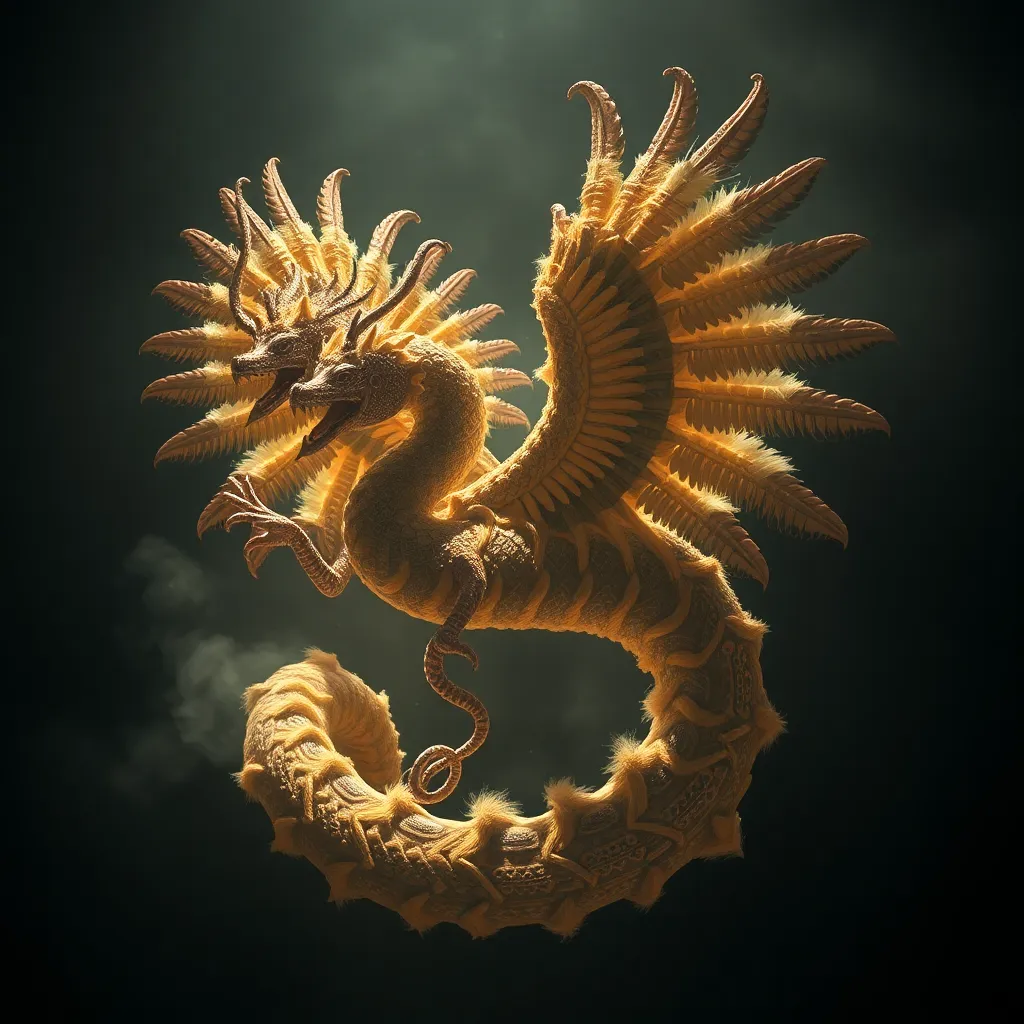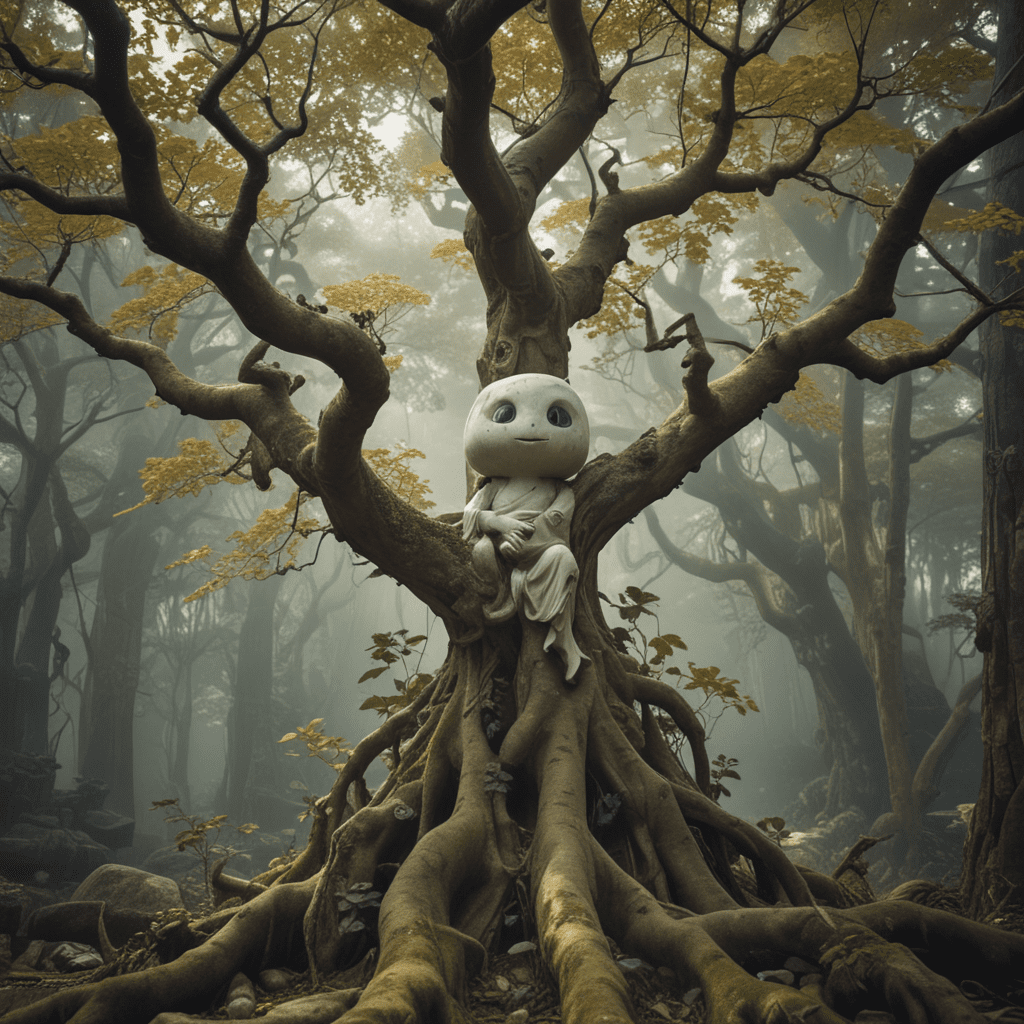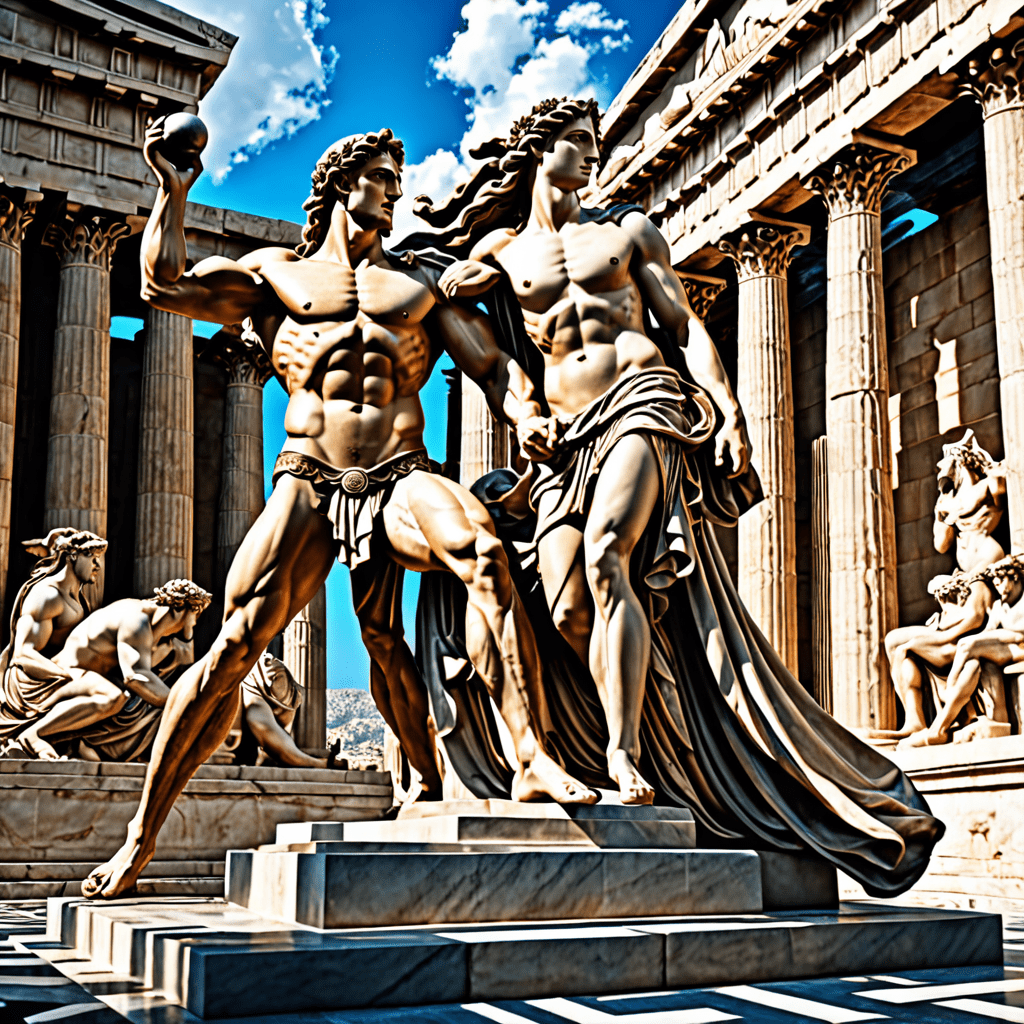The Mythical Temples in Hindu Mythology
Hindu mythology is replete with fascinating stories and legends that have captured the imagination of people for centuries. Among these tales are those of mythical temples, said to possess extraordinary powers and be the abode of divine beings. These temples often serve as the setting for epic battles, spiritual quests, and miraculous events, adding to their allure and significance. In this article, we will explore some of the most prominent mythical temples in Hindu mythology, delving into their origins, legends, and the profound impact they have had on the culture and信仰 of the Hindu people.
The Golden Temple of Kailash
The Golden Temple of Kailash is considered the most sacred abode of Lord Shiva, the destroyer and transformer in the Hindu pantheon. It is said to be located on Mount Kailash in the Himalayas, a remote and inaccessible peak that has been revered for centuries as the abode of the gods. The temple is believed to be made of pure gold and is described in ancient texts as having a thousand golden spires and four entrances, each guarded by a fierce deity.
The Celestial City of Amaravati
Amaravati is the legendary capital of the kingdom of the gods, Indraloka. It is said to be located in the heavens and is described as a city of unparalleled beauty and splendor. The streets of Amaravati are paved with gold and adorned with celestial palaces, gardens, and lakes. It is believed that the gods reside in Amaravati and that it is a place of eternal happiness and bliss.
The Underwater Kingdom of Patala
Patala is the mythical underworld in Hindu mythology, said to be located beneath the earth. It is described as a vast and complex realm divided into seven regions, each ruled by a different demon king. Patala is said to be home to a variety of creatures, including serpents, demons, and ghouls. It is also believed to be the abode of the demon king Ravana, who kidnapped Lord Rama's wife, Sita, in the epic Ramayana.
The Forest of Dandaka
The Forest of Dandaka is a mythical forest located in central India. It is said to be a vast and dangerous place, filled with wild animals, demons, and wicked spirits. The forest is associated with the epic Ramayana, as it was the place where Lord Rama, his wife Sita, and his brother Lakshmana spent fourteen years in exile.
The City of Lanka
Lanka is the legendary capital of the demon kingdom in the epic Ramayana. It is said to be located on an island in the Indian Ocean and is described as a city of great beauty and magnificence. Lanka was ruled by the demon king Ravana, who abducted Lord Rama's wife, Sita. The epic battle between Rama and Ravana culminated in the destruction of Lanka and the defeat of the demon king.
6. The Celestial City of Amaravati
Amaravati, the celestial city of the gods, is a realm of unparalleled beauty and splendor. Located in the heavens, it is described in ancient texts as a city of golden streets, adorned with celestial palaces, gardens, and lakes. The gods reside in Amaravati, and it is believed to be a place of eternal happiness and bliss.
7. The Underwater Kingdom of Patala
Patala, the underworld in Hindu mythology, is a vast and complex realm located beneath the earth. Divided into seven regions, each ruled by a different demon king, Patala is home to a variety of creatures, including serpents, demons, and ghouls. It is also believed to be the abode of the demon king Ravana, who kidnapped Lord Rama's wife, Sita.
8. The Forest of Dandaka
The mythical Forest of Dandaka, located in central India, is a vast and dangerous place, filled with wild animals, demons, and wicked spirits. Associated with the epic Ramayana, it was the place where Lord Rama, his wife Sita, and his brother Lakshmana spent fourteen years in exile.
9. The City of Lanka
Lanka, the legendary capital of the demon kingdom, is a city of great beauty and magnificence. Located on an island in the Indian Ocean, Lanka was ruled by the demon king Ravana, who abducted Lord Rama's wife, Sita. The epic battle between Rama and Ravana culminated in the destruction of Lanka and the defeat of the demon king.
10. Conclusion
The mythical temples in Hindu mythology are more than just fictional places; they represent the aspirations and fears of the human mind. They reflect the belief in the existence of divine realms, the presence of evil forces, and the possibility of overcoming adversity through faith, courage, and determination. These mythical temples continue to inspire and captivate the imagination of people, serving as a reminder of the rich tapestry of Hindu mythology.
FAQs
Q1: What is the significance of the Golden Temple of Kailash?
A1: The Golden Temple of Kailash is considered the most sacred abode of Lord Shiva and is believed to be located on Mount Kailash, a revered peak in the Himalayas.
Q2: Where is the underwater kingdom of Patala located?
A2: Patala is located beneath the earth and is divided into seven regions, each ruled by a different demon king.
Q3: What happened in the Forest of Dandaka?
A3: Lord Rama, his wife Sita, and his brother Lakshmana spent fourteen years in exile in the Forest of Dandaka, which is described as a vast and dangerous place.
Q4: Who ruled the city of Lanka?
A4: The demon king Ravana ruled the city of Lanka, which was the capital of the demon kingdom.



